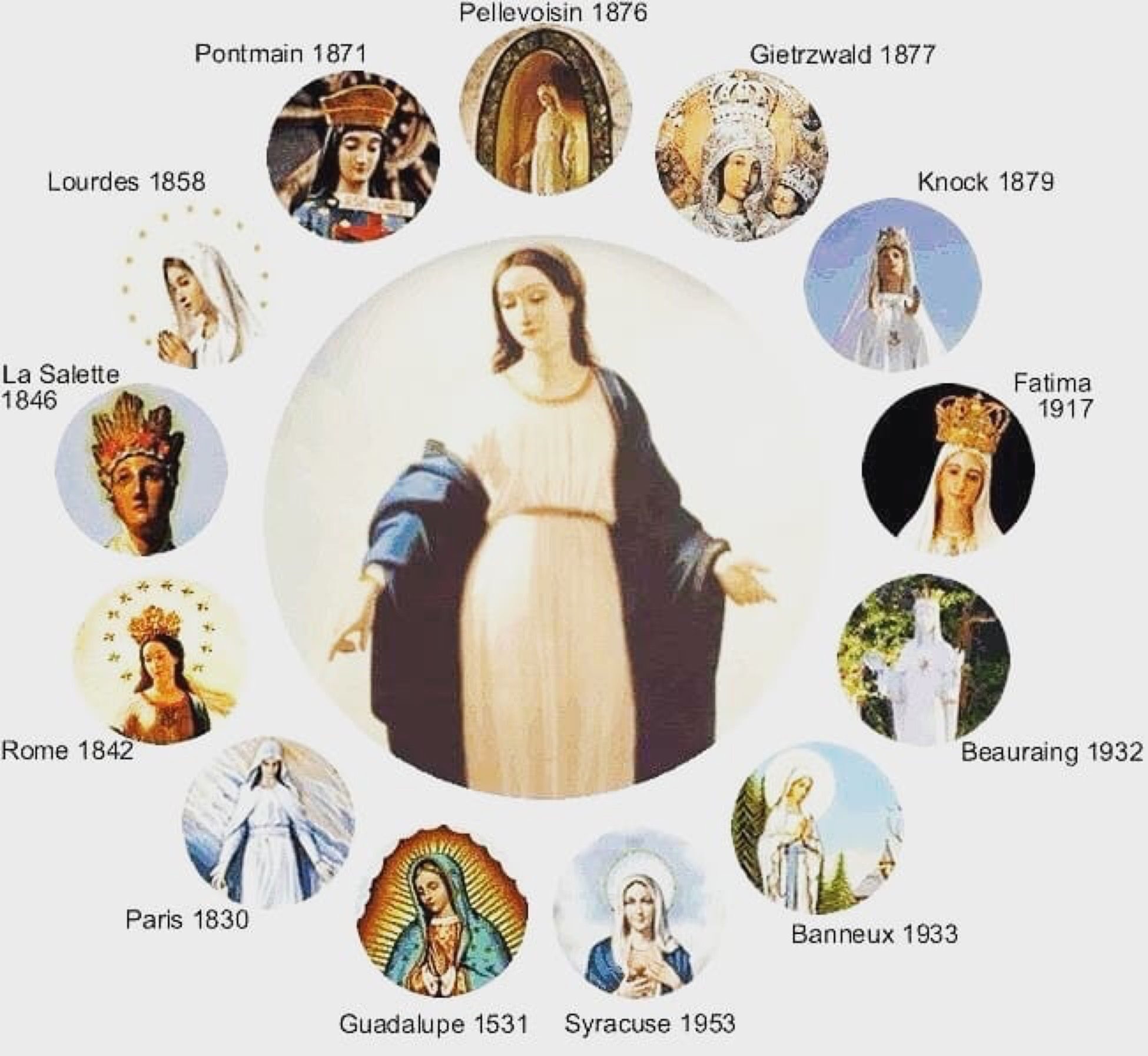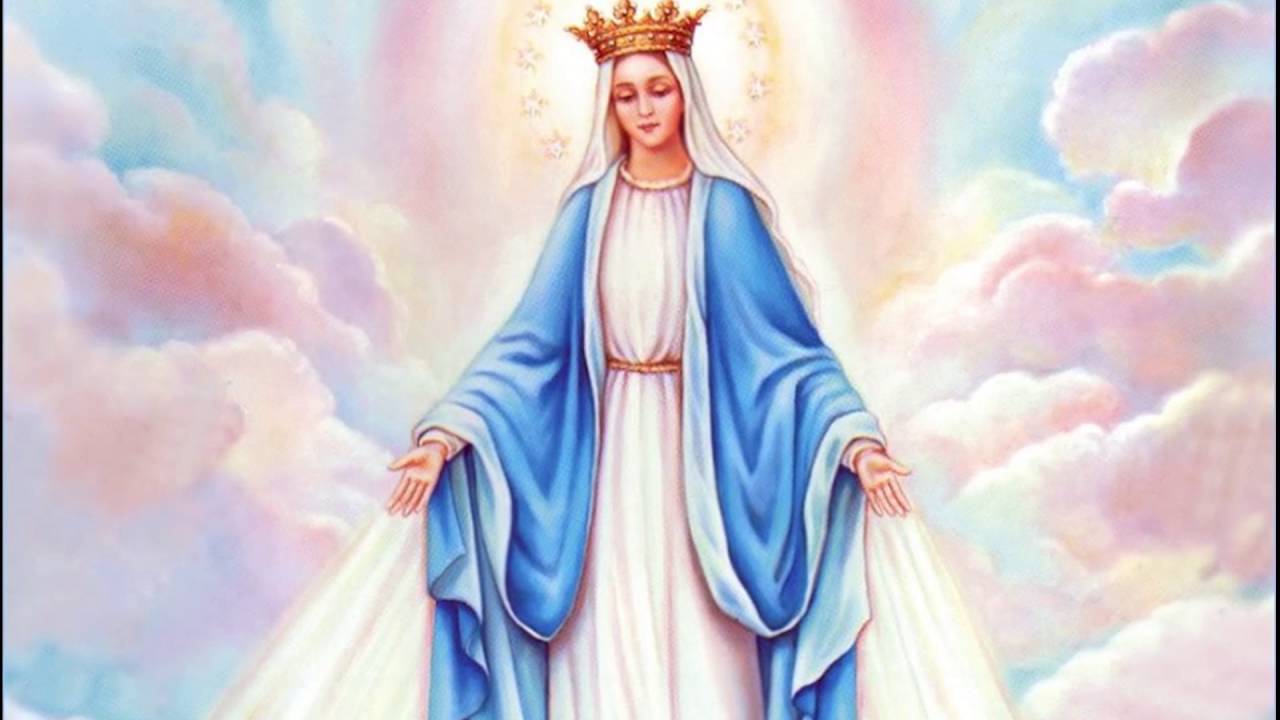When we talk about Marian Advocations, we refer to the way in which attributes, gifts, mysteries or apparitions that have to do with the Virgin Mary are granted, it also refers to the geographical area where it occurred, but if you want to know everything about this topic, keep reading our article that you will surely like.

The Marian Advocations
The word Advocation, is originally from Latin (advocate), its meaning is called or invocation and refers to the invocation to address the Virgin Mary under some particular title. These dedications are different depending on the geographical region where it is manifested, but in all of them the affection and devotion of the faithful is present, regardless of the dedication that it is and whether or not it is supported by historical or real facts.
These invocations are very important in the lives of Christians since their function is that all people can have communication with the Virgin Mary so that she intercedes from heaven for us. In addition, the faithful through the manifestation of love for the Virgin Mary also show love for God since she is the one who channels that love to reach him and his Son Jesus Christ from him.
Meaning of Advocation
This term is not within any book of those that make up the Bible, but it can be seen in it, quotes that are addressed to God in this case Jhavé or Jehovah where the meaning of the term or the way it is mentioned in an implicit way to invoke or call upon God. They are between them:
- Deuteronomy 16:1 “The God who brought you out of Egypt”
- Psalms 20:1 “The God of Jacob”
- Psalms 84:1 “The Lord of Hosts”
There we can see that a series of attributes and names are assigned to God and in the same way it is done with the Virgin Mary, so when Mary appeared in Fatima, she was given the title of Our Lady of Fatima, in Lourdes she was Our Lady from Lourdes, when she appeared with the three roses in Italy, it was Rosa Mystica. Their problem is how the apparition, devotion and specific veneration of each one of them is treated, since in the Bible she is only named as the Virgin Mary, Mother of Jesus.
Types of Advocations
Advocations are grouped into different categories, either because of the mystery they reveal, because of theology, psychology or emotional state, because of the symbols they use. Theologians and the church have cataloged six categories to include Marian manifestations:
- When it is established that they are related to the mysteries or passages of the life of the Virgin that are in the Bible, they are spoken of as the Annunciation, The Assumption, The Presentation, etc.
- When establishing their relationship with abstract dogmatic truths, we refer to them as Hope, Charity, and Consolation.
- If it is about her because of the physical, emotional or psychological states of the Virgin, they have called her Dolores, Soledad, etc.
- Due to her condition as mediator or intercessor and for the protection of humanity, they call her the Helper, the Mercedes, the Remedies.
- When seen by the symbols she uses that are interpretations of her qualities, such as Fruits, flowers, birds, etc. She is called the Pine, the Pomegranate, the Dove.
- Being the geographical places or places where it has been seen and its sanctuaries have been built, it has been called Carmen, the Sea, Fátima, Lourdes, etc.
When reference is made to any of her dedications, she has been called Santa María de, Virgen de or Nuestra Señora de. But sometimes the locals call her by female names using the first of them María followed by other female names such as del Carmen, de los Dolores, de Lourdes, de Fátima. But regardless of the name by which she is known, we are always dealing with a single Virgin Mary.
Controversies with Advocations
Since the beginning of the primitive church in the first centuries, there were already records that named Mary as Theotokos or Mother of God, that is why in the Council of Ephesus of 431 after Christ, a Dogma of the faith was declared to it. All the ideas that Nestorius had made where he only mentions her as the Mother of Jesus the Man and not as the mother of Jesus God are also declared null. Until this moment there were no denials of this truth that the Church considered as a foundation of the Marian attributions and of the different invocations of the same.
The Catholic and Orthodox churches defended this postulate of Mary, Mother of God, and also when the Protestant movements arose in the XNUMXth century, they reaffirmed this condition, especially in the postulates made by Martin Luther and that were maintained by John Calvin and Ulrich Zwingli. . But as the reformation progressed, in some of these post-reformation movements a different spin began on what the role of the Virgin Mary was in theology.
Since then the different manifestations of Protestantism have discredited this historical tradition of the church. Various patristic writings dealing with the Mother of Jesus and the various ways in which she was seen in the first three centuries of Christianity and also the various Marian manifestations that were accepted and proclaimed over the years.
Position of the Catholic Church
For the Catholic Church and according to its doctrines, Marian invocations are only ways of calling her from the point of view of the Bible, of what she does, of the place where she appears or of the message she wants to give. But they always make it clear that there is only ONE Virgin Mary. Each advocation has a different interpretation within Christianity, so for other religions that are not part of Catholicism these are only forms of idolatry, which are not part of the devotion established by the Bible.
That is why they have cataloged these manifestations as sociocultural, which are in accordance with the beliefs that existed in paganism and that were later Christianized, so the theology that should be present in it was ignored. There is also little study that supports the conception of Catholic doctrine, so it can be seen distorted, which means that the meaning of each of these manifestations is placed in opposition to what the Catholic Church really wants, causing many discussions that ended up causing ruptures in the church since they suggest that they are just pure superstition.
Celebration
In the liturgical year of the Catholic Church, commemorations are made of the different invocations of the Virgin Mary, several of which have been included in the Roman Calendar, and within the local calendars of churches and religious orders. Most of them coincide with the day of the Assumption or the Nativity, others in the month of May.
What is the oldest Marian Advocation?
The oldest dedication in Marian dedications dates back to the year 40 after Christ, and is known as the Virgin of the Pillar. It is said that Santiago apostle, the son of Zebedee saw an apparition of the virgin in the city of Caesaraugusta, which is currently in Zaragoza, Spain. This invocation arose at a time when the Virgin Mary was still alive. It tells us that in January of the year 40, Santiago the apostle saw the Virgin Mary in person. He recounted that together with other disciples, he heard the voices of angels and choirs singing Ave, María, Gratia plena, when the Mother of God stood on a column, hence the name of Virgen del Pilar.
Through this apparition, Mary comforted the mission of the apostle James, which consisted of evangelizing the most extreme western part of Europe, raising spirits and confirming the Gospel for new people who came to faith. When she finished her apparition, the pillar that has been preserved today was installed there. The unusual fact is that the Virgin Mary was alive at that time, and she asked Santiago to build a church around that pillar, and together with her companions who had converted they made the first primitive chapel with adobe on the banks of the River Ebro.
That chapel was the first Marian temple that was built in the Christian era, over the years the small chapel has become a Baroque-style Basilica known as Our Lady of the Pillar. As a cultural expression, it has a festival, with mass and divine office that was approved by Pope Clement XII for all of Spain in the XNUMXth century and that Pope Pius VII considered it a liturgical category in the feast of the solemnity.
You may be interested in learning about these other topics:
How many miracles did Jesus perform?


